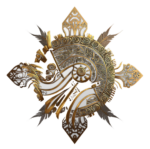Testimonial
History
The Dragon’s Tears is a movement set with a unique history.
The creator of the set is the Old Nagual Lujan, who compiled the set as his ‘Last Dance of Power’. The set was however not passed on to his lineage successor and effectively was lost, until he taught it via transmission to Nagual Lujan Matus.
The Old Nagual Lujan was Chinese and studied energy-work, what today is called Qi-gong, Nei-Gong or Neijia, amongst others, before he came to the Americas. In addition, he apprenticed to an Altai Shaman. The possible link between the Altai shamanism and energy work is not known. As is known, he later became a Nagual of a Toltec lineage. In this role he met the Tennant, who shared many gifts with him.
The Dragon’s Tears therefore represent his capstone summary of learnings in at least four ‘esoteric’ disciplines: Altai Shamanism, Chinese internal arts, Toltec Nagualism and whatever it was that the Tennant shared with him.
Purpose
The goals of the set are its results:
– Access the full energy body,
– stimulate and circulate energies that course in and around the body.
– Activate each chakra
– Access, work and absorb life-force energy
– Create a state of calm vitality,
– Clear stagnant energy from the system and promote better health
– Awaken and enliven new layers of awareness (through the body),
– Heightens acuity
– Either neutralise inner talk, or magnify awareness of it so that it has to be confronted.
The magic of movement sets enables all this to happen through stimulation of both physical and energetic channels, awareness of them and the body in a state of heightened acuity and inner silence, while practising with a specific intent.
The movements
On one level the set looks like Chinese Qi-gong. The practitioner stands on one place while flowing through the movements. There are roughly 20 forms woven together by additional linking forms.
Levels
I have had the benefit of attending training in Dragon’s Tears three times. The transmission occurred in ‘levels’, so as to enable the student to assimilate the full set. The first level in 2009 had a close-to-the-body approach with full extensions. In 2010 the movements became more rounded with extensions decreasing. By 2011 the fluidity was almost total with smaller circles emerging. More than that, a certain attitude becomes apparent in the performance. All this reminds of the classical approach to learning internal Chinese martial arts like Taijiquan, where a refinement of movements takes place over time. Lujan now transmits the ‘final level’ to students who attend the training since students appear to assimilate this first time these days… or perhaps I was just a bit slow.
The Experience
One learns the Dragon’s Tears directly from Lujan, as transmission. Spending time learning with someone who has practiced the form consistently for decades, in addition to being there to learn from a Nagual makes for an experience one cannot imagine up-front. I now have no doubts as to the role of the body in personal transformation -it is part of the self in this reality, and offers the ideal vehicle for growth. A reason to consider other things like raw food nutrition… something Mizpah, Lujan’s wife can help one with.
I recommend training with Lujan without reservation. Also I am sure it would not matter which course one attends.
Henk
